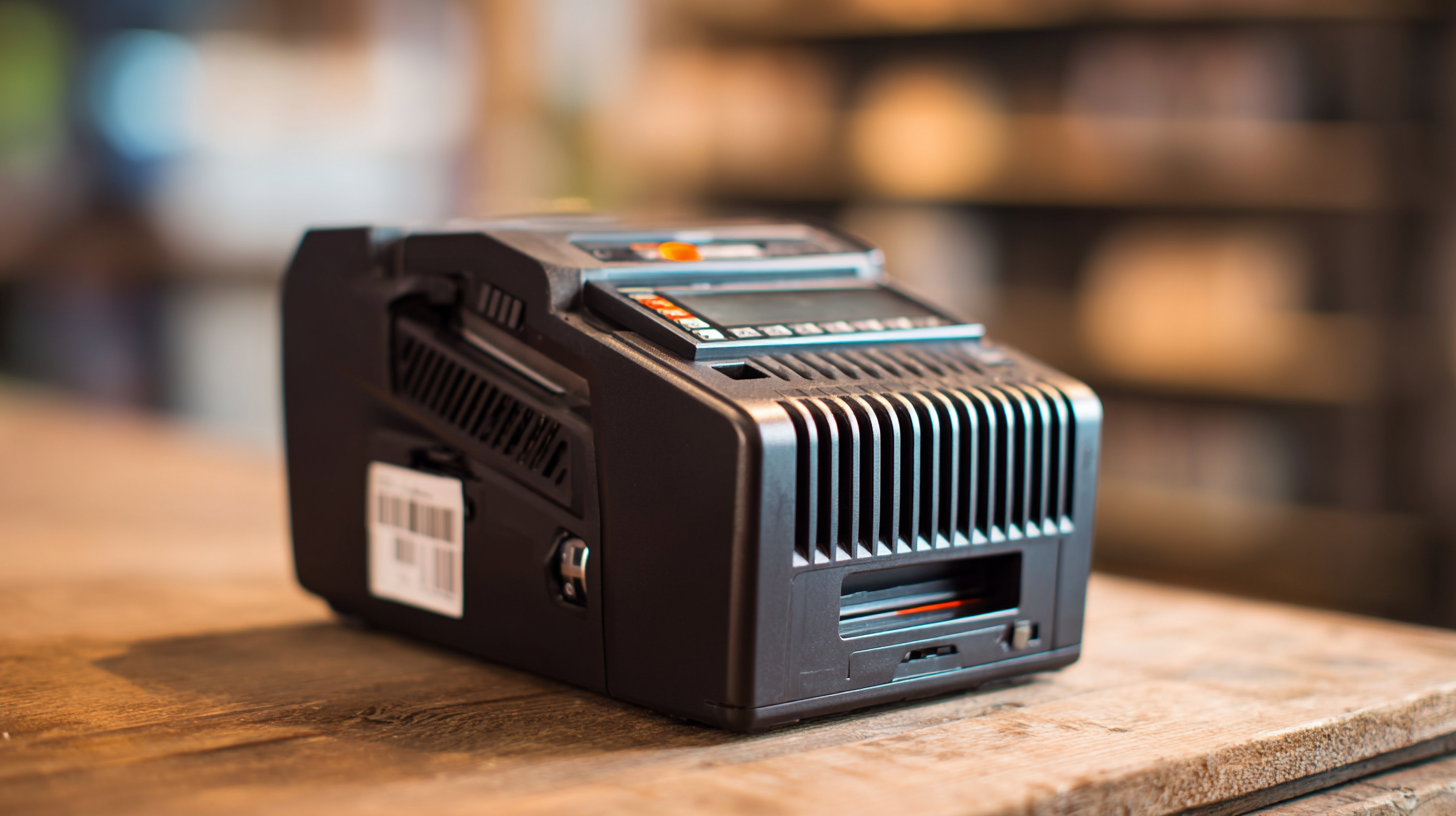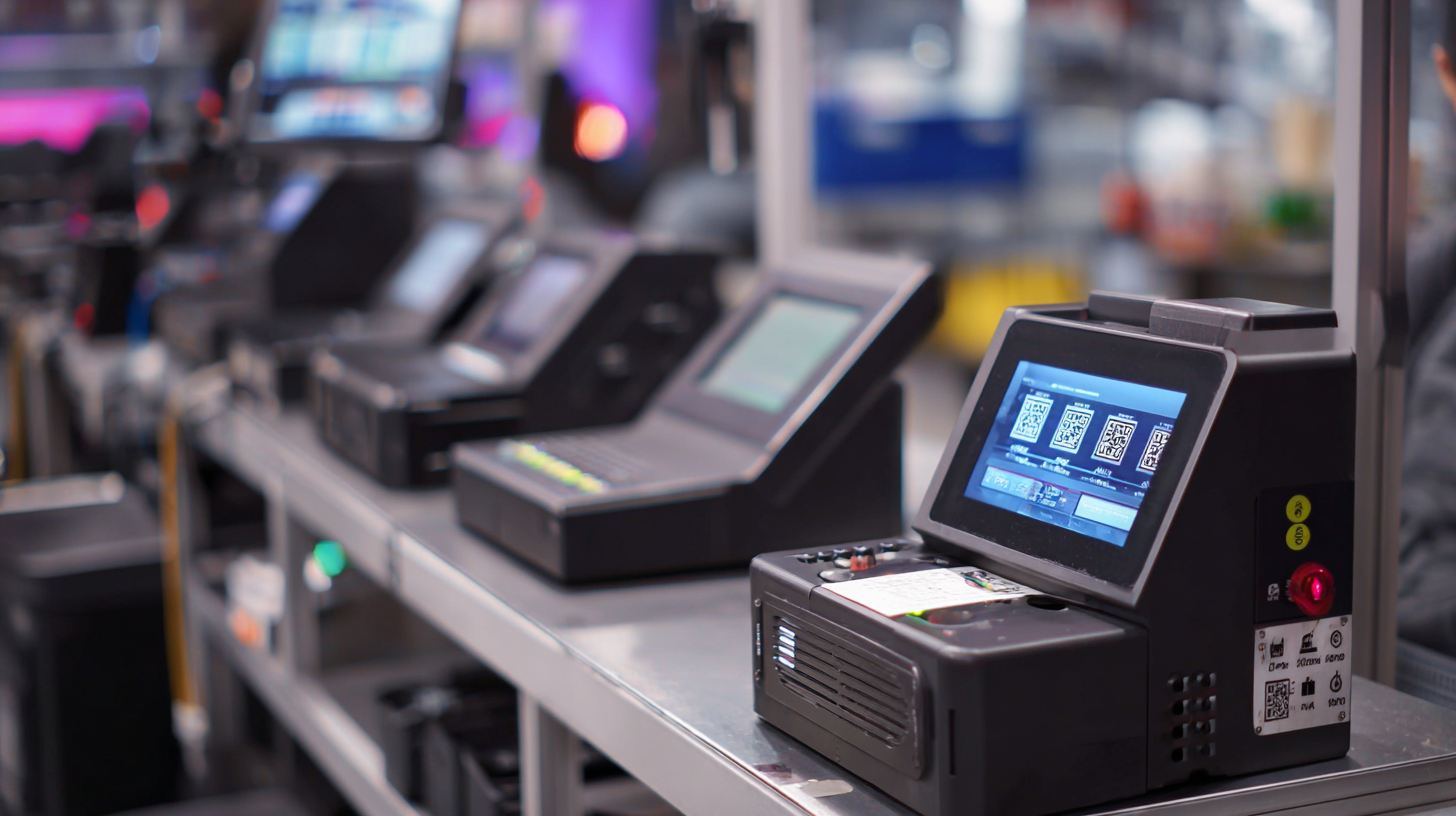In today's fast-paced business environment, maximizing efficiency is paramount, and one of the key tools to achieve this is the Barcode Thermal Printer. These printers play a crucial role in streamlining inventory management, enhancing logistics operations, and improving point-of-sale transactions by producing high-quality barcodes with exceptional speed and accuracy. However, understanding the technical specifications of these devices is essential for making an informed choice that aligns with your operational needs. This blog delves into the intricate details of Barcode Thermal Printers, highlighting their various features and offering top strategies on how to optimize their performance. By unlocking the full potential of your printing technology, you can achieve greater productivity and effectiveness, paving the way for a seamless workflow in your business processes.

When exploring the world of barcode thermal printers, understanding the available technologies and key features is essential for optimizing performance. The barcode printer market is projected to see substantial growth, with insights indicating a move towards advanced printing technologies such as Direct Thermal and Thermal Transfer. These two types stand out, with Direct Thermal printers offering simplicity and lower operating costs, while Thermal Transfer printers provide superior durability and print quality, suitable for demanding environments.
For businesses looking to enhance efficiency, it's vital to consider connectivity options when selecting a printer. Recent trends reveal that the adoption of wireless and mobile-compatible devices is increasing, allowing for seamless integration with existing systems. Embracing these technologies not only streamlines operations but also reduces overhead costs.
**Tips:** Always assess the specific needs of your business before investing in a barcode thermal printer. Consider factors such as print volume and label durability. Regular maintenance can also significantly impact performance; keep the printer clean and replace consumables as needed to ensure longevity. By focusing on these key aspects, businesses can unlock the efficiency benefits of the best barcode thermal printers on the market.
When choosing between thermal transfer and direct thermal printing, it’s essential to understand the primary differences in print quality and application. Thermal transfer printing utilizes a ribbon that melts onto the printing surface, resulting in high-resolution images and text. This method is ideal for applications requiring durable labels that can withstand heat, moisture, and UV exposure. Products like barcodes, labels for packaging, and asset tags benefit significantly from this method due to its longevity and superior print quality.
On the other hand, direct thermal printing operates without a ribbon; instead, it uses heat-activated thermal paper. While this technique is often faster and more cost-effective, it typically produces prints that may fade over time, especially when exposed to sunlight or high temperatures. Direct thermal printing is best suited for short-term use items, such as shipping labels and receipts, where durability is less of a concern. Understanding these differences allows users to select the right printing method based on their specific needs and optimally utilize their barcode thermal printer.
When it comes to large-scale printing, speed and efficiency are paramount. The right barcode thermal printer can significantly influence operational workflow, making it essential to evaluate technical specifications that underpin performance metrics. Factors such as print speed, resolution, and durability play a crucial role in determining the overall efficiency of a printing system. Optimal settings can lead to reduced downtime and increased productivity, particularly in environments where time is a critical factor.
Recent advancements in technology, as highlighted by new research from a team at a major institute, underscore the importance of effective quantitative assessment in various applications. Just as the rapid evaluation of immunological indicators can enhance healthcare practices, optimizing the performance of thermal printers can streamline business operations. By leveraging precise metrics—such as print speed in labels per minute and operational costs—companies can ensure they are getting the most from their printing capabilities. Understanding these specifications is key to unlocking greater efficiency in large-scale printing processes, mirroring the pursuit of innovation in other fields.

When it comes to maximizing the efficiency of barcode thermal printers, understanding the connectivity options available is essential. USB connections are commonly used for their simplicity and directness, allowing easy plug-and-play setups. They are ideal for environments where printers are connected directly to individual workstations. However, as businesses grow and require more flexibility, Ethernet connectivity comes into play. Ethernet allows for networked environments that enable multiple users to share a single printer, providing a well-organized system for high-volume printing tasks.

Wireless solutions, including Bluetooth and Wi-Fi, add another layer of accessibility to barcode thermal printers. These options cater to mobile and remote printing needs, allowing users to operate printers from various locations without being tethered by cables. Wireless connectivity not only enhances workflow efficiency but also reduces clutter in the workspace, making it ideal for dynamic retail and warehouse environments. By selecting the right connectivity option, businesses can unlock the full potential of their barcode thermal printers and achieve streamlined operations tailored to their specific needs.
When it comes to maximizing the output of barcode thermal printers, proper maintenance and setup are crucial. According to industry reports, regular maintenance can increase printer lifespan by up to 30%, significantly reducing the costs related to downtime and repairs. This efficiency not only contributes to seamless operations but also ensures that the quality of printed barcodes remains high, preventing scanning issues in the supply chain.
One effective tip for optimizing performance is to ensure that the printer heads are cleaned regularly. Dust and residue can accumulate and affect printing quality. Using isopropyl alcohol and a soft cloth, gently clean the print head to maintain optimal performance. Additionally, always calibrate the printer settings to align with the media type being used. This will prevent overheating and ensure proper ink application, which can lead to clearer barcodes.
Furthermore, consider using high-quality thermal labels, as using subpar materials can cause unforeseen issues. A study by the Label Manufacturers Association indicated that using quality labels enhances thermal transfer printing performance by 50%. Investing in proper label media not only boosts print quality but also reduces wear and tear on the printer. By implementing these tips, you can ensure your barcode thermal printer operates efficiently and effectively, maximizing output in your operations.
| Specification | Details |
|---|---|
| Printing Technology | Thermal Transfer / Direct Thermal |
| Print Resolution | 203 dpi / 300 dpi |
| Print Speed | Up to 300 mm/sec |
| Media Width | 25 mm to 110 mm |
| Connectivity Options | USB, Ethernet, Bluetooth |
| Dimensions | 250 mm x 200 mm x 150 mm |
| Weight | 2.5 kg |
| Operating System Compatibility | Windows, macOS, Linux |
| Maintenance Tips | Regular cleaning, update firmware, use quality labels |
